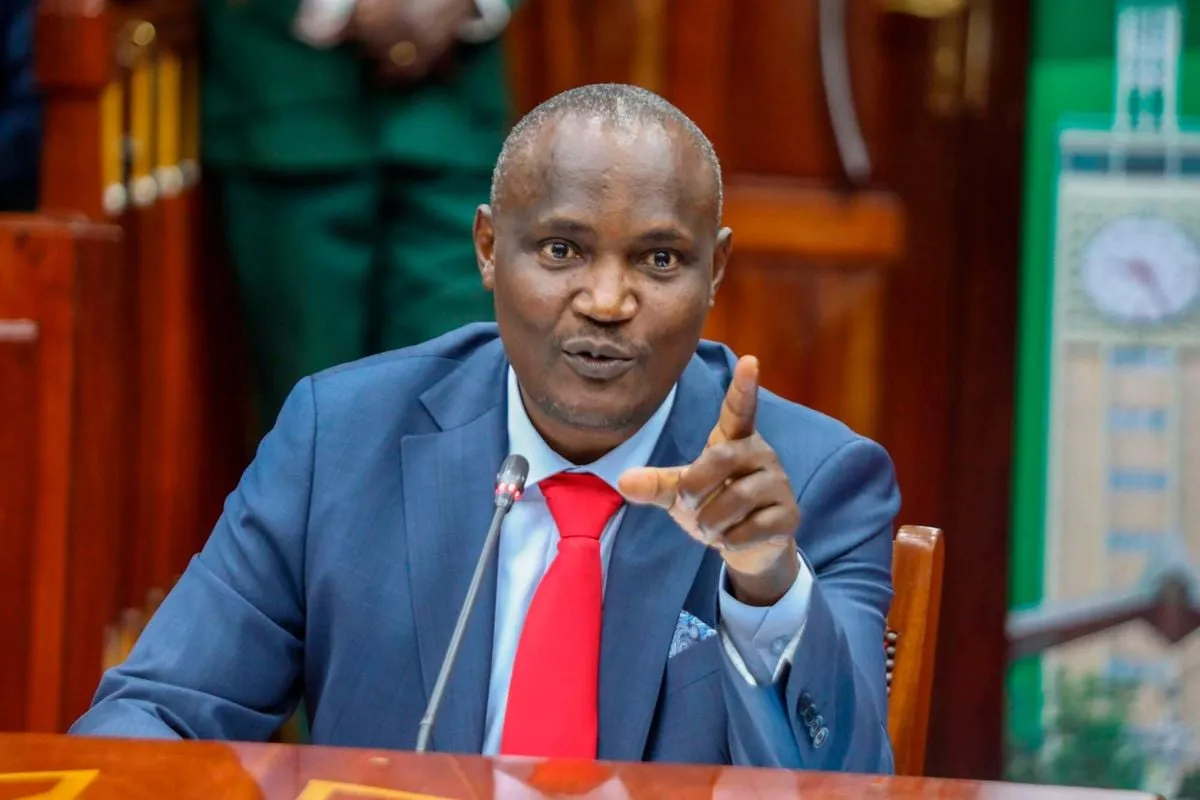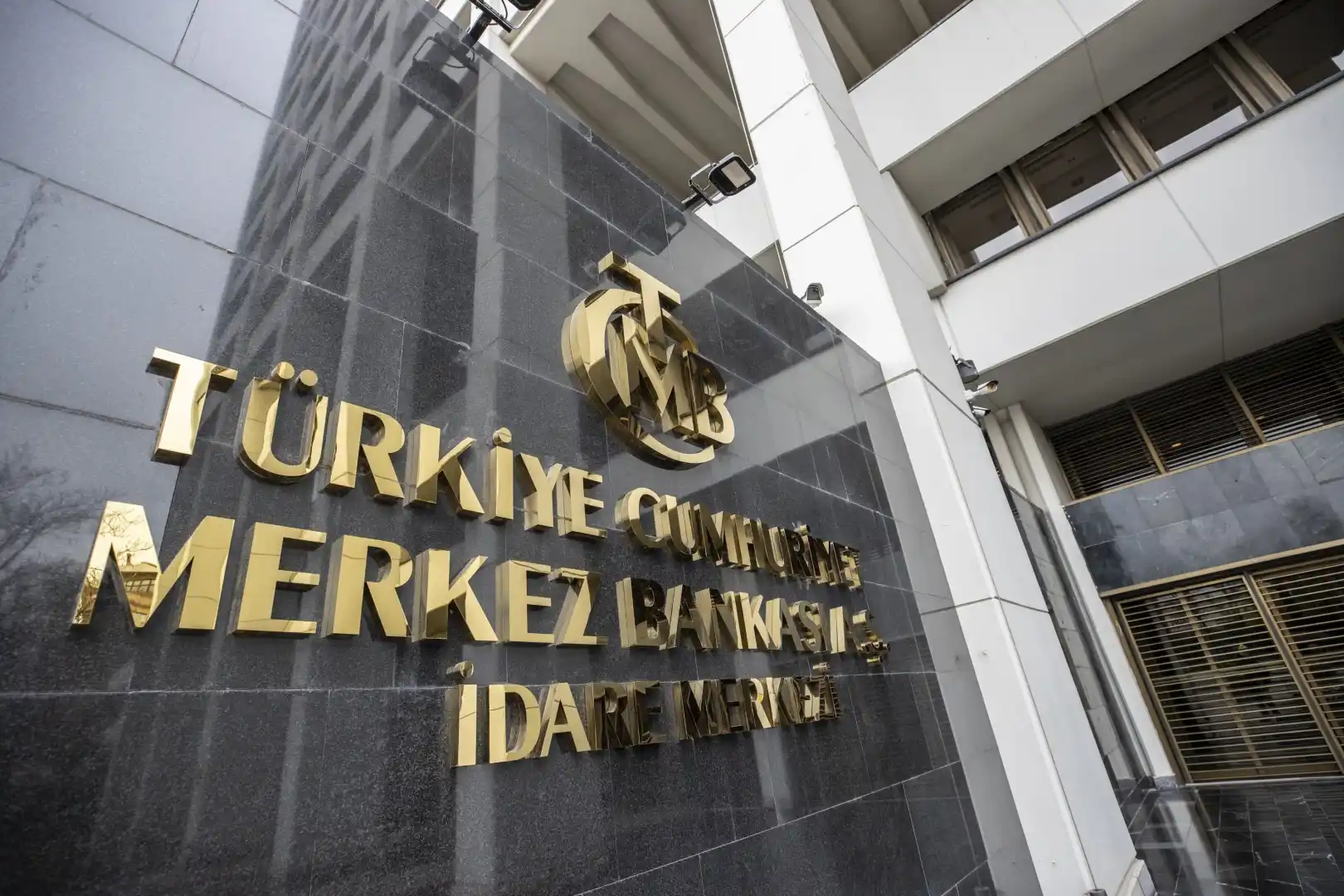In a moment charged with both expectation and trepidation, Kenya’s Finance Minister, John Mbadi, rose before parliament on Thursday to unveil the nation’s budget for the 2025/26 fiscal year. With the ceremonial briefcase by his side, Mbadi articulated a vision of sustained economic growth, projecting a lower fiscal deficit and an unwavering commitment to financial stability. Yet, beneath the official pronouncements and optimistic forecasts, a palpable tension lingered – a reflection of a government grappling with a colossal public debt, intense public scrutiny over taxation, and the ever-present specter of global and environmental risks.
The budget presentation unfolded amidst a backdrop of escalating protests in the capital, Nairobi, triggered by the tragic death in custody of a political blogger. Vehicles were set ablaze, and police resorted to tear gas to disperse demonstrators, a stark reminder of the deep-seated public discontent that has simmered since last year’s deadly protests over proposed tax hikes. This human element – the frustration of ordinary Kenyans over the cost of living and perceived over-taxation – forms a critical counter-narrative to the fiscal figures. While Minister Mbadi asserted that “Kenyans cannot bear more tax” and claimed no new taxes were added in the current finance bill, critics were quick to accuse the government of cleverly introducing indirect taxes and encroaching on financial privacy, laying bare the ongoing trust deficit between the government and its citizens.
Kenya’s Economic Landscape: A Foundation for Growth, Yet Riddled with Risks
Mbadi painted a picture of a nation on a “trajectory of sustained economic growth,” with the economy projected to expand by a robust 5.3% in both 2025 and 2026. This optimistic outlook is largely predicated on a projected “stable macroeconomic environment over the medium term.” The government anticipates this growth to be driven by several key factors: enhanced agricultural productivity, bolstered by favorable weather conditions and targeted interventions; a resilient services sector, particularly in areas like ICT and financial services; and the continued implementation of President William Ruto’s Bottom-Up Economic Transformation Agenda (BETA). BETA, the government’s flagship blueprint, is designed to uplift Kenyans from the grassroots by emphasizing a value chain approach and targeting high-impact sectors to ensure economic benefits trickle down to the majority.
However, even with these promising projections, Mbadi acknowledged the potential risks that could derail Kenya’s economic journey. These include:
- Global Trade Sanctions and Market Volatility: While Kenya may not be a direct target of major international sanctions, its interconnectedness with the global economy means it is vulnerable to ripple effects. Sanctions imposed on major trading partners or within global supply chains can disrupt established trade routes, increase transaction costs, and limit access to essential imports or export markets. This could particularly affect sectors reliant on international trade, impacting jobs and foreign exchange earnings.
- Extreme Weather Conditions: The climate crisis poses an acute and escalating threat to Kenya, a nation heavily reliant on rain-fed agriculture. Studies show that extreme weather events, such as prolonged droughts and intense floods, are increasing in frequency and intensity, directly threatening livelihoods and national food security. Agriculture, which accounts for approximately 28% of Kenya’s GDP and over 65% of its exports, is particularly vulnerable. Droughts can lead to widespread crop failures, livestock deaths, and severe water scarcity, impacting millions of smallholder farmers and driving up food prices. Conversely, unprecedented floods can destroy crops, damage vital infrastructure, and lead to displacement and health crises. The World Bank estimates that droughts alone have historically cost Kenya about 8% of its GDP every five years. The government acknowledges the need for greater investment in climate adaptation and resilience measures, but the human toll of these events remains devastating.
The KSh 4.29 Trillion Blueprint: Allocations, Revenue, and the Military’s Gain
The total budget for the 2025/26 fiscal year stands at a colossal KSh 4.29 trillion (approximately $33.27 billion), representing a significant 10% increase from the revised KSh 3.9 trillion budget estimates for the preceding fiscal year. To finance this ambitious spending plan, the government projects to raise KSh 3.328 trillion ($25.63 billion) through ordinary revenue and Appropriations-in-Aid (A-i-A). A-i-A refers to non-tax revenues collected by government ministries, departments, and agencies (MDAs) from services they provide, such as fees, licenses, and charges. The remaining KSh 916.5 billion ($7.06 billion) will be sourced through domestic and external borrowing.
A major pillar of the government’s revenue strategy is the Kenya Revenue Authority’s (KRA) formidable target of collecting KSh 2.7 trillion from taxes, accounting for approximately 64% of the total funding requirement. The KRA has been on an aggressive drive to meet its targets, leveraging digital initiatives such as the Electronic Tax Invoice Management System (eTIMS) for real-time VAT fraud detection and actively resolving tax disputes, recovering KSh 21.9 billion between January and March 2025 alone.
In a notable parliamentary reorganization of the Treasury’s initial estimates, the military emerged as the biggest financial beneficiary, securing an additional KSh 13 billion ($100.1 million) allocation. This substantial boost to defense spending, endorsed by the Budget and Appropriations Committee which added KSh 33.01 billion ($254.18 million) to the Treasury’s estimates, underscores the government’s heightened focus on national security and defense preparedness amidst regional instability and ongoing efforts to combat terrorism. However, this increased allocation came at a cost: critical sectors such as public financial management, education, and sports suffered the steepest cuts. For a nation striving for human capital development and youth empowerment, cuts in education and sports raise concerns about long-term impacts on opportunity, skill development, and the overall well-being of the youth population.
The Debt Challenge: A Persistent Shadow Over Fiscal Stability
Kenya’s public debt has been a persistent and growing concern, with the total debt-to-GDP ratio hovering at around two-thirds, significantly above the 55% level considered a sustainable threshold for developing economies. This heavy debt burden translates into substantial debt-servicing obligations, which are projected to consume over KSh 1.37 trillion in FY2025/2026 – an 11% increase from the previous year. Such large expenditures on debt servicing significantly constrain the government’s ability to fund essential public services, infrastructure development, and social welfare programs, directly impacting the lives of ordinary Kenyans.
President William Ruto’s administration has been struggling to narrow this fiscal deficit, which is forecast to decline to 4.8% of GDP in 2025/26 from 5.7% in 2024/25. The government’s strategy is outlined in its Medium-Term Debt Management Strategy (MTDS) 2025-2028, which aims to bring the debt-to-GDP ratio back to the legally mandated 55% by 2028. This involves a multi-pronged approach:
- Prioritizing Concessional Borrowing: Seeking loans with more favorable terms (lower interest rates, longer repayment periods) from multilateral and bilateral lenders.
- Diversifying Funding Sources: Exploring new avenues for financing, including diaspora bonds (tapping into remittances from Kenyans abroad), sustainability-linked bonds (tying bond terms to environmental or social targets), and Shariah-compliant products such as Sukuk bonds, building on the success of a recent KSh 3.2 billion Sukuk issuance for affordable housing.
- Enhancing Transparency and Accountability: The National Treasury is in the process of integrating its Commonwealth Meridian Debt Management system with other key financial systems like the Integrated Financial Management Information System (IFMIS) and the Central Bank of Kenya’s (CBK) core banking systems. Furthermore, a comprehensive audit of public debt is currently underway, a response to public concerns about transparency.
While these measures are designed to improve fiscal health, their successful implementation is crucial for unlocking funds for essential public services and ensuring a stable economic environment for Kenyans.
Taxation, Transparency, and Public Outcry: ‘Kenyans Cannot Bear More Tax’
The statement by Finance Minister John Mbadi that “Kenyans cannot bear more tax” and his assertion that the Finance Bill 2025 has “not added taxes” or “raised any tax rates” resonated with a public weary of increasing levies. This comes after widespread, sometimes deadly, protests that rocked East Africa’s biggest economy last year, forcing the government to scrap planned tax hikes worth over KSh 346 billion ($2.7 billion) in the previous Finance Bill 2024. These protests, primarily youth-led and mobilized through social media, were met with fierce police suppression, resulting in at least 65 reported deaths and hundreds of injuries, highlighting the intense public frustration over the rising cost of living and perceived government insensitivity. The death in custody of a political blogger, which triggered renewed protests, further intensified this public outrage, serving as a raw reminder of the human cost of these fiscal policies.
However, critics quickly accused the government of a nuanced approach to taxation, suggesting that while direct tax rates might not have increased, the budget included significant indirect tax measures that would ultimately increase the cost of living for many Kenyans:
- Increased Import Duty: A key proposed change is an increase in the general import duty rate from 25% to 35%, a 40% relative increase that impacts the foundational cost for many imported goods.
- Escalated Excise Duty: Excise duty rates have reportedly escalated up to 35% for certain categories, including some popular small car models, which are often favored for taxi services and personal use due to their fuel efficiency. This hits transport operators and individuals directly, leading to higher transport costs that cascade through the economy.
- Cumulative VAT: The 16% Value Added Tax (VAT) is applied cumulatively on these duties, leading to substantially higher final prices for a wide range of goods and services, including essential products like diapers and menstrual products, and critical tools like computers and mobile phones.
- Taxes on Digital Transactions: Increases on mobile money transfers and new taxes on income from digital content and marketplaces further burden the digital economy, which many Kenyans rely on for livelihoods and daily transactions.
- VAT on Financial Services and Forex: A 16% VAT on financial services and foreign exchange transactions directly impacts the cost of banking and international trade, potentially making financial access more expensive.
Beyond the tax burden, profound privacy concerns have emerged regarding the government’s proposed empowerment of the tax authority to “spy on people’s bank accounts and mobile money transactions.” The Finance Bill 2025, if enacted, proposes removing legal barriers that currently require the KRA to obtain court orders to access private financial data. This move, while argued by the government as necessary to empower the KRA to collect taxes effectively and combat tax evasion (particularly in government procurement), has met strong resistance from commercial banks and privacy advocates. Banks argue that direct access to transaction data risks breaching Kenya’s Data Protection Act, 2019, exposing sensitive customer information to cybersecurity risks, and eroding public trust in the financial system. For ordinary Kenyans, this signifies a direct intrusion into their personal financial lives, raising fundamental questions about the balance between revenue collection and individual rights.
Fiscal Credibility and the Implementation Gauntlet
While the proposed budget outlines credible measures to reduce the fiscal deficit and streamline revenue collection, economists like Shani Smit-Lengton, Senior Economist at Oxford Economics Africa, point to Kenya’s historical struggles with budget implementation. This often results in mid-year revisions through supplementary budgets, which, while allowed for under Article 223 of the Constitution for “unforeseen and unavoidable circumstances,” have historically been used to adjust unrealistic initial projections or introduce new, often foreseeable, expenditures.
This frequent reliance on supplementary budgets erodes fiscal credibility. It means that the initial budget, which undergoes extensive parliamentary and public scrutiny, often becomes a moving target, undermining public participation and creating unpredictability for businesses and citizens. The Controller of Budget has in the past highlighted instances where supplementary budgets introduced illegal expenditures or reallocated funds to projects that had been rejected during public participation, further straining trust in public financial management. The government’s stated aim to “cut spending” and crack down on fraud is crucial, but past patterns suggest that achieving the projected deficit reduction will hinge on robust implementation and unwavering political will.
The IMF Lifeline: A Partner in Fiscal Discipline
In March, Kenya announced its application for a new lending programme from the International Monetary Fund (IMF), following the mutual decision to abandon the final review of its previous IMF program. Finance Minister Mbadi clarified that this decision was primarily due to “time limitations” and was not indicative of a fallout between Nairobi and the IMF, confirming that roughly $800 million remained unutilized from the previous $3.5 billion Extended Fund Facility (EFF) and Extended Credit Facility (ECF) program.
This new IMF engagement is crucial for Kenya’s financial stability. An IMF program typically serves as a vote of confidence for international investors, signaling a commitment to fiscal discipline and economic reform. It helps to:
- Anchor Investor Confidence: Providing reassurance to both domestic and foreign investors about the government’s commitment to sound economic policies.
- Unlock Concessional Financing: Facilitating access to more affordable loans from other multilateral and bilateral partners.
- Support Structural Reforms: Providing a framework and technical assistance for necessary fiscal and economic reforms, often including measures to enhance revenue collection, improve public expenditure management, and manage public debt more sustainably.
However, IMF programs often come with stringent conditions, which can lead to politically sensitive decisions, such as fiscal consolidation measures or reforms that impact the cost of living. This underscores the delicate balance the Kenyan government must strike: satisfying international financial partners while also addressing the socio-economic realities and demands of its citizens. The discussions with the IMF are expected to continue, potentially incorporating the unutilized funds into a newly structured program, highlighting the ongoing reliance on external financial support to navigate its fiscal challenges.
Conclusion: Kenya’s Enduring Spirit in a Time of Change
Kenya’s 2025/26 budget presentation is a snapshot of a nation at a crossroads. It reflects a government determined to foster sustained economic growth and stabilize its public finances, encapsulated in ambitious projections and revenue-raising targets. Yet, it also illuminates the profound challenges that persist: a formidable debt burden, a public deeply sensitive to taxation, and the unpredictable forces of global trade and climate change.
The debate over direct versus indirect taxes, and the contentious issue of financial privacy, reveals a crucial tension between the government’s need for revenue and the citizens’ desire for transparency, fairness, and personal space. The echoes of past protests serve as a powerful reminder that fiscal policies have a direct, often intensely personal, impact on people’s daily lives – on their ability to afford food, transport, education, and access basic services.
As Kenya moves forward, its success will not solely be measured by GDP figures or deficit reductions, but by its ability to translate these macroeconomic aspirations into tangible improvements in the lives of its citizens. The path ahead requires not just fiscal discipline and shrewd economic management, but also genuine engagement, empathy, and a sustained commitment to addressing the human realities behind the numbers. Kenya’s resilience has been tested time and again, and its enduring spirit will be crucial in navigating these complex and transformative times.
Ready to take your career to the next level? Join our dynamic courses: ACCA, HESI A2, ATI TEAS 7 , HESI EXIT , NCLEX – RN and NCLEX – PN, Financial Literacy!🌟 Dive into a world of opportunities and empower yourself for success. Explore more at Serrari Ed and start your exciting journey today! ✨
photo source: Google
By: Montel Kamau
Serrari Financial Analyst
13th June, 2025
Article, Financial and News Disclaimer
The Value of a Financial Advisor
While this article offers valuable insights, it is essential to recognize that personal finance can be highly complex and unique to each individual. A financial advisor provides professional expertise and personalized guidance to help you make well-informed decisions tailored to your specific circumstances and goals.
Beyond offering knowledge, a financial advisor serves as a trusted partner to help you stay disciplined, avoid common pitfalls, and remain focused on your long-term objectives. Their perspective and experience can complement your own efforts, enhancing your financial well-being and ensuring a more confident approach to managing your finances.
Disclaimer: This article is for informational purposes only and does not constitute financial advice. Readers are encouraged to consult a licensed financial advisor to obtain guidance specific to their financial situation.
Article and News Disclaimer
The information provided on www.serrarigroup.com is for general informational purposes only. While we strive to keep the information up to date and accurate, we make no representations or warranties of any kind, express or implied, about the completeness, accuracy, reliability, suitability, or availability with respect to the website or the information, products, services, or related graphics contained on the website for any purpose. Any reliance you place on such information is therefore strictly at your own risk.
www.serrarigroup.com is not responsible for any errors or omissions, or for the results obtained from the use of this information. All information on the website is provided on an as-is basis, with no guarantee of completeness, accuracy, timeliness, or of the results obtained from the use of this information, and without warranty of any kind, express or implied, including but not limited to warranties of performance, merchantability, and fitness for a particular purpose.
In no event will www.serrarigroup.com be liable to you or anyone else for any decision made or action taken in reliance on the information provided on the website or for any consequential, special, or similar damages, even if advised of the possibility of such damages.
The articles, news, and information presented on www.serrarigroup.com reflect the opinions of the respective authors and contributors and do not necessarily represent the views of the website or its management. Any views or opinions expressed are solely those of the individual authors and do not represent the website's views or opinions as a whole.
The content on www.serrarigroup.com may include links to external websites, which are provided for convenience and informational purposes only. We have no control over the nature, content, and availability of those sites. The inclusion of any links does not necessarily imply a recommendation or endorsement of the views expressed within them.
Every effort is made to keep the website up and running smoothly. However, www.serrarigroup.com takes no responsibility for, and will not be liable for, the website being temporarily unavailable due to technical issues beyond our control.
Please note that laws, regulations, and information can change rapidly, and we advise you to conduct further research and seek professional advice when necessary.
By using www.serrarigroup.com, you agree to this disclaimer and its terms. If you do not agree with this disclaimer, please do not use the website.
www.serrarigroup.com, reserves the right to update, modify, or remove any part of this disclaimer without prior notice. It is your responsibility to review this disclaimer periodically for changes.
Serrari Group 2025





